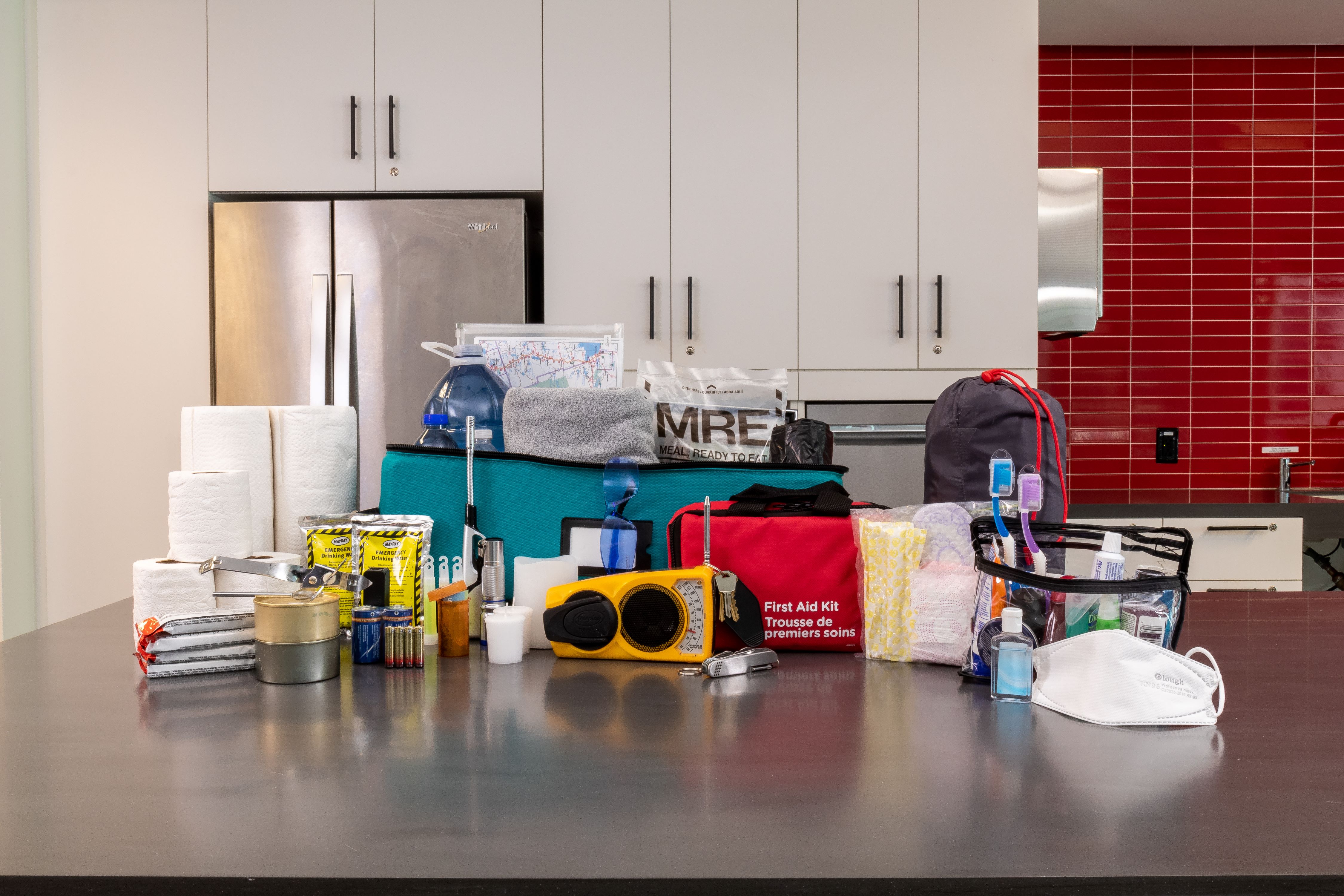Before an emergency happens, it’s important to make sure you have a plan in place for your household. Follow the steps below to:
Know the Risks
Being aware of the hazards in your community can help you develop your own emergency plan. Consider the likelihood and consequences of various risks where you live, work, and play and then plan accordingly. In Lambton, the following hazards may be more prevalent:
- Agricultural & Food emergencies
- Civil Disorder
- Critical Infrastructure failure
- Cyber Attack
- Electrical Energy
- Hazardous Materials (fixed site, transportation, or pipeline)
- Infectious Disease
- Severe Summer Weather
- Terrorism & Sabotage
- Water Quality
- Winter Weather
Make a Plan
Record the important details of your emergency plan using the format that works best for you, whether on paper or digitally. Make sure to include a copy of your plan in your emergency kit and share it with those in your household.
Be sure to include the following elements in your home emergency plan:
- Names and triplicate contact information (i.e., cell phone, home phone, social messaging, email) for each family member.
- Evacuation Plan with:
- Two ways out of your home
- Location of your emergency kit
- Safe meeting areas near your home and in your neighbourhood.
- Emergency numbers (including 9-1-1):
- Police
- Fire
- Family Doctor
- Dentist
- Telehealth
- Poison Control
- Insurance
- Relatives and Friends (local and out-of-town)
- Utilities
- Utility shut-off procedures
When your plan is ready:
- Review it with family members and other close contacts
- Keep your plan in an easy-to-access location.
- Review it annually (it is good practice to review your plan the same time you refresh your 72-hour kit).
Shelter-in-Place |
|
Several hazards could lead to local officials advising residents to shelter-in-place. If you are advised to shelter-in-place: Shelter
Shut
Stay Tuned
Continue to shelter-in-place until the "all clear" is given by your local municipality. |
Evacuations |
|
Evacuation advisories are issued when it is more dangerous to stay in place than it is to leave. During evacuation advisories, monitor Sarnia-Lambton Alerts and listen to your radio for instructions. Keep the following information in mind:
|
Assemble a Kit
72-Hours
 One of the best ways you can prepare for emergencies is to have enough supplies at home to feed and care for you and your family for at least three days following a crisis or disaster. This is called a 72 Hour Emergency Supplies Kit (or 72-Hour Kit). Include the following items for each family member:
One of the best ways you can prepare for emergencies is to have enough supplies at home to feed and care for you and your family for at least three days following a crisis or disaster. This is called a 72 Hour Emergency Supplies Kit (or 72-Hour Kit). Include the following items for each family member:
- Backpack or small suitcase (for supplies)
- First-aid kit
- Prescription medications.
- Change of clothing
- Candles or matches, lighter
- Sleeping bag or bed roll
- Personal hygiene items
- Phone charger and power bank
- Portable lights
- Batteries
- Emergency radio
- Hand sanitizer
- Garbage bags
- Duct tape
- Zip-lock bags (to keep things dry)
- Non-perishable food (replaced yearly)
- Manual can-opener
- Bottled water (4 litres per person per day)
- Copies of important documents
- Whistle
- Playing cards, games
- Toilet paper
- Extra car and house keys
- Extra cash
- “Special needs” items for any member of your household (i.e. baby formula, diapers, prescription medication etc.)
| Travel |
|
Prepare for emergencies on the road, too. Include the following supplies in your vehicle’s emergency kit:
Keep a shovel, sand, tow chain, booster cables, and warning lights/flares in your trunk, particularly for winter travel emergencies. |
| Pets |
|
|
Stay Informed
Watches and Warnings
 Do you know the differences between severe weather watches and warnings, issued by Environment & Climate Change Canada?
Do you know the differences between severe weather watches and warnings, issued by Environment & Climate Change Canada?
Watch: issued when conditions are favourable for severe weather to develop later in the day. Monitor weather conditions and watch for updates. Be prepared to act if severe weather develops.
Warning: issued when severe weather is imminent or occurring. Take immediate safety precautions.
Sarnia-Lambton Alerts
Sarnia-Lambton Alerts, powered by Everbridge, Inc., is an advanced regional emergency notification tool used by local municipalities to communicate emergency information including shelter-in-place, boil water, and evacuation advisories. Sarnia-Lambton Alerts also includes emergency and non-emergency updates from local industrial sites. Sign up to receive notifications.
Alert Ready
Alert Ready is Canada’s emergency alerting system. Alert Ready delivers critical and potentially life-saving alerts to Canadians through television, radio and LTE-connected and compatible wireless devices. Visit AlertReady.ca for more information.
Helpful Resources
Weather |
|
| Power Outages |
| Public Health |
| Public Alerting |











 Just as you should prepare an emergency supplies kit for you and your family, prepare an emergency kit for your pet(s) to keep them comfortable for at least seven days. This kit should be stored in an easy to carry duffle bag or container next to your own emergency kit. Include the following items:
Just as you should prepare an emergency supplies kit for you and your family, prepare an emergency kit for your pet(s) to keep them comfortable for at least seven days. This kit should be stored in an easy to carry duffle bag or container next to your own emergency kit. Include the following items: Subscribe to this page
Subscribe to this page